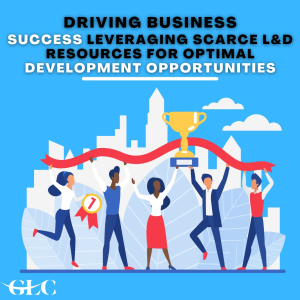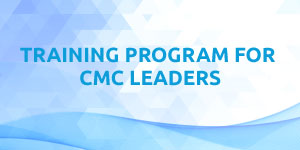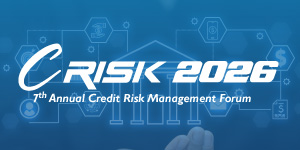Free knowledge to monitor the world of events. Have a look at our must read Blogs on Pharma, Finance, HR, Health and Cross Industry.
Driving Business Success: Leveraging Scarce L&D Resources for Optimal Development Opportunities
2022-08-16
Understanding the Impact of Limited L&D Resources
From an HR project to a strategic instrument for staff development, innovation, and market competitiveness, learning and development (L&D) has changed. By use of workshops, online courses, and vocational training, companies can provide their staff members with the abilities and information required to accomplish company objectives, therefore enhancing output and performance.
In the current employment market, acquiring and keeping top talent, raising employee engagement, and expanding business all depend on having extensive L&D programs. Professional, skill, personal, and career advancement development opportunities—must be evaluated for effectiveness and return on investment (ROI) in order to support the investment and enhance L&D programs.

Understanding the Impact of Limited L&D Resources
Impact on Employee Growth and Productivity
Employee growth is greatly facilitated by effective learning and development (L&D) methods; 69% of businesses report notable benefits after implementing customized training programs. These programs are vital to professional growth because they fill in skill shortages and are necessary for drawing in and keeping talent. Moreover, better productivity and greater employee involvement—two essential components of a successful workplace—are associated with well-designed L&D plans.
Challenges of Inadequate L&D Resources
Many times, companies struggle with issues like inadequate leader development and a dearth of creative training options, which can impede the development of staff members and the company. A lack of resources for learning and development can make a business less competitive, unable to adjust to changes in the market, and lagging behind rivals. A dearth of worthwhile development opportunities can also cause employee discontent, which in turn creates a bad work atmosphere and raises turnover rates.
Legal and Ethical Considerations
Lack of ethical, health, and safety training can result in serious compliance problems, including breaking the law and maybe getting into legal trouble. Developing a safe workplace that protects staff members and the company requires appropriate training in these areas.
The Global Shift in Workforce Dynamics
The quick speed of globalization and digital change means that companies must always modify their L&D plans to satisfy changing workforce expectations and market needs. Understanding the value of qualified staff, businesses are committing to workforce development by increasing their L&D budget to boost employee training hours.
In order to emphasize the importance of strong, flexible L&D strategies in the fast-paced business world of today, this section describes the several effects of inadequate learning and development resources on a company's staff and overall success.
Strategies for Maximizing Limited L&D Resources
Evaluate and Enhance Learning Environments
Starting with an evaluation of present programs to determine necessary skills and competences and making sure they are handled with relevance and measurability would improve learning and development (L&D) approaches. Using an employee-centric strategy, personalize training material to the requirements and objectives of the individual through casual conversations. Make use of on-the-job training as well as using regular work encounters as chances for growth, guided by seasoned coworkers.
Align Training with Business and Employee Goals
To improve L&D methods even more, give frequent, helpful criticism and modify strategies in response to employee input and performance statistics. Create training courses that guarantee reciprocal advantages by matching company goals with the goals of the employees. Moreover, create precise measures of the success of the training, such as completion rates and the influence on employee objectives.
Leverage Technology and Community Resources
Using free or inexpensive internet resources like webinars, podcasts, and courses, add e-learning tools to your regular training regimen. For chances at cooperative learning, interact with nearby educational institutions and internet forums. Encourage top executives to take part in training courses as well to show your dedication and promote a learning culture.
Foster a Culture of Continuous Improvement
Establishing iterative feedback loops by routinely gathering and evaluating input from all stakeholders can improve training programs. This makes the programs to be improved and refined continuously. Applying the Pareto Principle, use adaptive learning techniques and concentrate on the training components that have the biggest impact. To further promote skill distribution, activate networks inside the company to enable staff members to teach and learn from one another.
Companies can develop an attitude of ongoing learning and flexibility by wisely using their few L&D resources, which is essential for preserving a competitive advantage and employee happiness in ever-changing market conditions.
The Role of Leadership in Overcoming L&D Limitations
Embracing Leadership Development
The attraction and retention of future leaders depend critically on investment in leadership development (LD). The next generation of leaders cannot be developed unless the main issue in LD—the lack of investment and buy-in—is addressed. Leaders also need to know how training and development help staff members become more capable, help with role changes, and stay current with changing abilities. Working together with company executives, L&D experts may create concise messaging that explains the reasoning for developmental changes and guarantees alignment with company objectives.
Enhancing Learning Culture and Engagement
The foundation of a strong learning culture is management support and entails good communication, fulfilling learning opportunities, and integration with the broader HR plan. Including gamification, visuals, and customized training improves learning styles and the efficiency of L&D programs. Moreover, creating inspiring and customized learning opportunities boosts learner involvement and gives staff members significant value, which strengthens the company's dedication to their professional development.
Measuring and Demonstrating Impact
Demonstrating the efficacy and return on investment (ROI) of L&D projects requires a precise definition of training program goals and the use of data and metrics to monitor progress. To demonstrate the benefit of training to leadership, evaluations and the connection of metrics to learning activities must be carried out. This quantitative method guarantees that the results of L&D initiatives can be assessed and successfully conveyed, which promotes well-informed decisions and ongoing funding for staff development.
Addressing Change and Challenges
Analysis of organizational needs and leadership collaboration to prioritize projects that address issues and reduce stress brought on by changes are crucial tasks performed by L&D specialists. The tight collaboration guarantees that L&D initiatives are in line with corporate goals and adaptable to changing needs. Effective navigation of volatility, uncertainty, complexity, and ambiguity (VUCA) further requires the L&D function to embrace agility. Through quick adaptation and adoption of creative strategies, L&D may improve organizational resilience and promote ongoing learning and development.
Innovative L&D Technologies and Tools
Because AI-powered platforms can provide customized learning experiences, they are completely changing the learning and development (L&D) scene. The learning process is improved by the material that these platforms provide, which is very pertinent to the person's present tasks. Applications of AI in learning include collaborative learning environments, adaptive learning systems, intelligent performance support tools, real-time feedback and analytics, and AI-powered learning platforms.
L&D professionals should give scalability, collaborative learning capabilities, support, and the capacity to handle several use cases with careful thought when choosing a learning technology platform. These application cases include everything from talent management and staff onboarding to compliance and thorough corporate training.
A major tactic for inspiring staff members to perform better is blended learning. The integration of digital platforms or different combinations of digital platforms, it maintains students' interest and involvement in the learning process.
Conclusion
We discussed on the revolutionary power of learning and development (L&D) in promoting business success and the need of strategic L&D spending in developing people, raising output, and maintaining competitiveness. We've observed that creative approaches like leveraging community resources and technology and encouraging ongoing education can increase the efficacy of L&D programs. The case studies and examples demonstrate how companies may get above resource limitations to create successful L&D initiatives that satisfy both employee and corporate objectives.
Looking ahead, collaborative learning environments and AI-powered platforms will influence L&D efforts along with a strong dedication to leadership development. Resource limitations and shifting employee dynamics need companies to be adaptable and progressive in their workforce development plans. These tactics and ongoing assessment and modification of L&D programs in reaction to input and evolving wants will enable companies to satisfy present market needs and get ready for future obstacles, guaranteeing long-term success and expansion of their businesses.
Join our upcoming HR Minds 2024 Conference.
Check here for all HR-focused online masterclasses.
By Sasly Ahmeth, Social Media Executive & IT Support, GLC Europe, Colombo Office, Sri Lanka.
Get a feel for our events

Training Program for CMC Leaders - EU edition
27th October 2025 - 16th January 2026
Rich with practical insights and real-world applications
learn more >>
Training Program for CMC Leaders - US edition
27th October 2025 - 16th January 2026
Rich with practical insights and real-world applications
learn more >>
Mastering the Common Technical Document (CTD) for Biologics Masterclass - EU edition
12-16 January, 2026
From guidelines to submissions
learn more >>














